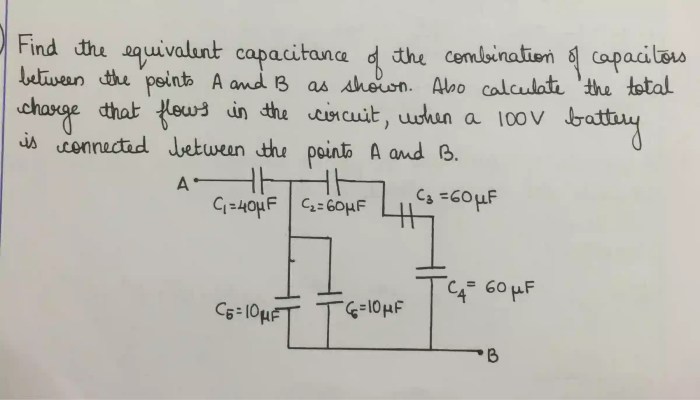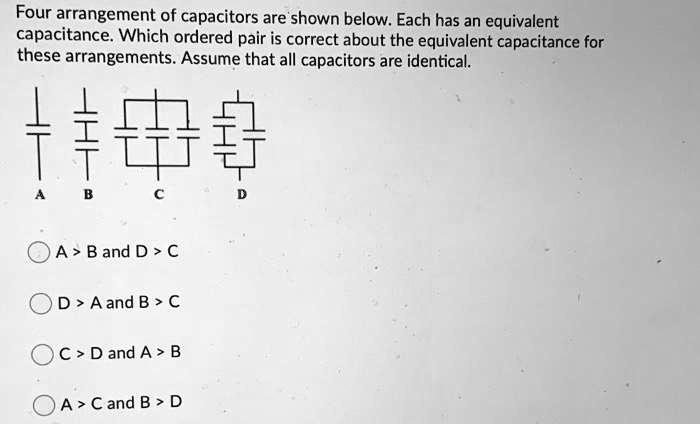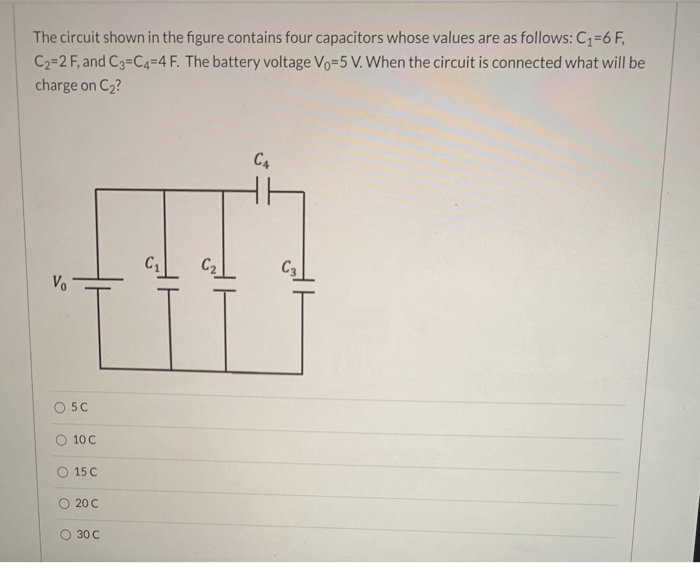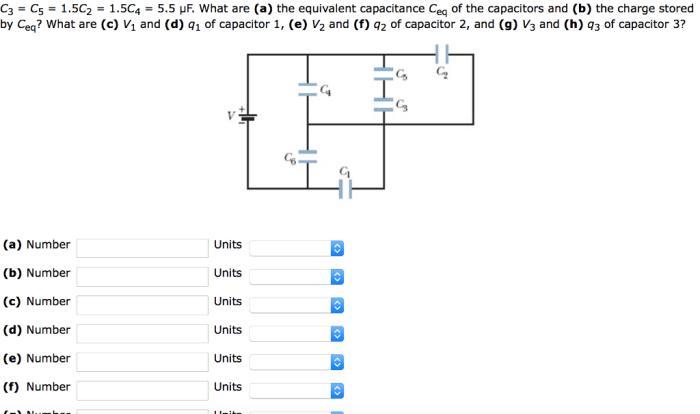What is the equivalent capacitance of the four capacitors? This fundamental question forms the cornerstone of our exploration into the realm of capacitance, a concept central to the functionality of electronic circuits. As we delve into the intricacies of capacitor configurations, we will uncover the formula for calculating equivalent capacitance and delve into the practical applications that make this concept indispensable in circuit design.
Capacitance, measured in farads (F), quantifies the ability of a capacitor to store electrical charge. Understanding the factors influencing capacitance, such as plate area, distance between plates, and dielectric material, is crucial for comprehending the behavior of capacitors in various configurations.
Capacitor Fundamentals

Capacitance refers to the ability of a capacitor to store electrical charge. It measures the amount of charge that can be stored on the capacitor for a given voltage. The unit of capacitance is the farad (F), named after the physicist Michael Faraday.Factors
affecting capacitance include the size and shape of the capacitor’s plates, the distance between them, and the type of dielectric material used between the plates.
Equivalent Capacitance

Equivalent capacitance is the total capacitance of a combination of capacitors connected in series or parallel. The formula for calculating equivalent capacitance depends on the configuration of the capacitors.
Series Capacitor Configuration, What is the equivalent capacitance of the four capacitors
In a series configuration, the capacitors are connected end-to-end, with the positive terminal of one capacitor connected to the negative terminal of the next. The equivalent capacitance of capacitors in series is given by:/C eq= 1/C 1+ 1/C 2+ … + 1/C nwhere C eqis the equivalent capacitance and C 1, C 2, …, C nare the individual capacitances.
Parallel Capacitor Configuration
In a parallel configuration, the capacitors are connected side-by-side, with all positive terminals connected together and all negative terminals connected together. The equivalent capacitance of capacitors in parallel is given by:C eq= C 1+ C 2+ … + C nwhere C eqis the equivalent capacitance and C 1, C 2, …, C nare the individual capacitances.
Applications of Equivalent Capacitance: What Is The Equivalent Capacitance Of The Four Capacitors

Equivalent capacitance plays a crucial role in electronic circuits, such as:
- Filtering circuits to remove unwanted frequencies
- Energy storage in power supply circuits
- Timing circuits in oscillators and timers
- Coupling circuits to transfer signals between different parts of a circuit
Understanding equivalent capacitance is essential for designing and analyzing electronic circuits.
Essential Questionnaire
What is the formula for calculating equivalent capacitance in series?
1/Ceq = 1/C1 + 1/C2 + … + 1/Cn
What is the advantage of using parallel capacitor configurations?
Parallel configurations increase the overall capacitance, allowing for greater charge storage.
In what practical applications is equivalent capacitance crucial?
Equivalent capacitance plays a vital role in designing filters, timing circuits, and power supply smoothing circuits.
